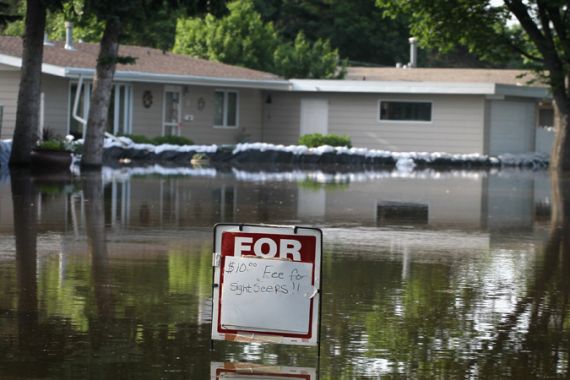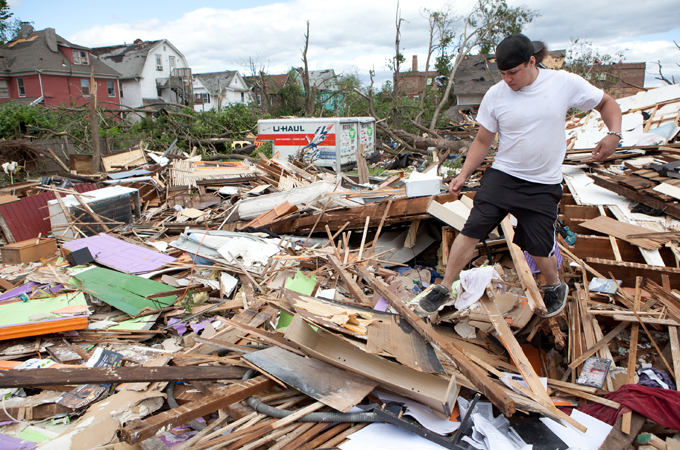A year of extremes across the US
It is easy to find extreme weather in a country of its size, but 2011 is proving exceptional even by US standards.

 |
| Tornadoes have hit western and central Massachusetts [GALLO/GETTY] |
In a country the size of the United States, it is relatively easy to find extreme weather events.
US territory extends from 70 degrees latitude in the north (if you include Alaska) to the sub-tropics in the south, so the weather is always highly variable.
Keep reading
list of 4 itemsAfter the Hurricane
World’s coral reefs face global bleaching crisis
Why is Germany maintaining economic ties with China?
However, 2011 is proving exceptional even by US standards.
To the end of May it had been calculated that the cost of weather-related damage to the country was $5bn. That was, of course, before what has become known as the Great Flood of 2011.
The year began with exceptionally heavy precipitation in many northern states, which for Minnesota, Nebraska, the Dakotas, Montana and Wyoming manifested itself in the form of major snowfalls.
With the cold weather persisting, snowmelt began later than usual. But once it got under way, meltwaters were swelled by record rainfall, particularly in Montana and Wyoming.
Significantly, May precipitation along the Souris River was three times higher than average.
Yet even before the snowmelt had got under way, the country had seen the deadliest tornado season on record, with more than 500 fatalities, seven times the average rate.
In April alone there were 875 reported tornadoes, beating the previous record of 267. These are remarkable statistics in every respect.
Many southern states have also had to cope with extreme drought conditions, extending from Arizona in the west to Louisiana in the southeast.
Aside from the loss of crops and grazing, wildfires caused widespread damage and destruction and the Wallow Fire of Arizona, covering 469,000 acres, was the largest in the state’s history.
Global warming
If we try and seek explanations for these events, we have to consider the impact of global warming.
As long ago as 2004 a paper by researchers at the US Forest Services used a computer model to suggest a fivefold increase in burn areas for states such as New Mexico and Utah.
The current La Nina event – a highly influential cold upwelling of water off Peru – may be weakening.
But the prevalence of cold air in the northern states, and the dry, warm weather in southwestern states, ties in with the predicted pattern for this phase of the Southern Oscillation.
If the weather pattern is to follow the predicted patterns for La Nina then there should be a return to more normal weather conditions later in the year.
Those suffering the effects of wildfires, flooding and drought will be praying that this is the case.